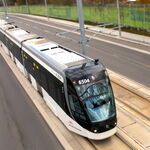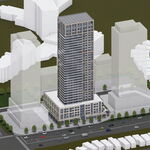Great to see discussion Re: Yonge Express Subway on here. This is the first time I have seen a proposal for an express Yonge line that would not be stupid expensive/shut down the city for years.
Question: Why are we so afraid of tunnelling deep on Bay? Yes, it would suck going up and down so many escalators, but to me it seems like an okay compromise for:
1) saving a lot of money and disruption with trying to route a tunnel in between a PATH network & Relief Line Subway at Queen;
2) bringing back the Wellesley station in the above proposal (UofT is an important node to hit IMO);
3) reaching the financial district and Union Station;
4) bringing the subway all the way down to Queens Quay, and delivering an appropriate interchange station with Queens Quay streetcars/LRT (no more dumb travellator ideas).
There are several points to consider here:
1. Should the Yonge - Bay Express continue south of Queen, reaching King or Union.
That's certainly desirable, even if not shown on my map. But, the concerns are construction costs, disruption, and the water table issues.
One possible solution is to keep the Bay line relatively shallow, and thread it
above the Queen Street's Relief Line. The PATH tunnels crossing Bay, in that case, could be closed during the construction, and later rebuilt to go above the subway structures.
2. Should the line go even further south, reaching Queen's Quay or Billy Bishop airport.
Such a plan would involve additional complications, and may be impractical after all. I read that the existing Bay Streetcar tunnel is at the same level as the YUS subway. Thus, the new Bay subway cannot reuse that tunnel. The new tunnel would have to go much deeper to get under Union Stn, and that certainly means going below the water table.
Plus, the Waterfront East LRT will be long in service before the Yonge Bay Express plan might see any progress. We will have a perfectly functional, upgraded streetcar tunnel south of Union, and that will reduce the incentive for extending the subway.
3. A St Clair interchange station.
Would be helpful for connectivity, but would necessitate a straight section of the line where it intersects St Clair. Given that the Yonge Express will not align with the street grid between Bay&Bloor and Yonge&Davisville, that additional requirement will make the design more difficult.
4. Distribution of the workload between the new Yonge - Bay Express and the "old" Yonge subway.
The new Express line will carry riders brought by all feeder routes running north of Eglinton. If the new line makes basically all stops except Summerhill and Rosedale, then there will be little incentive for those riders to transfer to the "old" line at Davisville. That means a risk of workload mismatch: the new Express is 75% or 80% as busy as a single Yonge line would be, while the shortened "old" line operates at under-50% capacity at all times.
I realize that an extra transfer means inconvenience, but I don't see another way to split the workload closer to 50%-50%, or at least 60%-40%, between the two closely running parallel lines, one of which is much longer than the other. (The only other solution is to extend both lines well north of Eglinton, but that would mean loads of money.)
That's another reason I didn't put stations at Wellesley or St Clair. At least, the transfer at Davisville would be same-platform.





